By Joanna Demarco
- Cruise ships in Malta’s Grand Harbour connected to the onshore power supply system just 9% of the time in the first year
- Cruise vessel traffic and arrivals continue to rise annually, now at over 940,000 visitors, raising doubts about whether overall air pollution is actually decreasing compared to the years prior.
- Shorter stays saw higher OPS use: 19% of ships berthed for a day or less plugged in, while none of those docked for longer than two days did.
- MSC World Europa accounted for just over half of OPS connections, yet failed to plug in on several occasions.
- Carnival Corporation’s liners used the technology only 6 times out of 58 calls, despite contractual obligations and available equipment.
- The 45% of port arrivals occur at 7am or earlier, intensifying early-morning noise and air pollution in nearby communities.
- The Senglea air monitoring station — which tracked near- real-time particulate matter — was removed in October 2024, reducing both monitoring of a ‘crucial’ pollutant and transparency in air quality monitoring around the Grand Harbour.
- Local residents continue to raise health concerns, with the Southern Harbour region recording the highest asthma hospital discharge rate in Malta between 2017 and 2022.
- Costs, grid stability, and outdated ship technology as possible reasons for low OPS uptake.
After a year in service, Malta’s Onshore Power Supply (OPS) system was used by cruise ships just 9% of the time, according to an analysis by Amphora Media.
That translates to roughly five and a half minutes per hour for every cruise ship berthing in the Grand Harbour.
Using publicly available data from the Valletta Cruise Port website and records on OPS (shore-to-ship) connections obtained from Transport Malta through a Freedom of Information (FOI) request, Amphora Media was able to calculate the total percentage of time vessels plugged in between July 2024 – when the ship-to-shore system in the Grand Harbour kicked off – and July 2025.
The data also shows that, as the number of cruise ships plugging into the OPS continues to gain momentum, the flow of cruise ships berthing in Malta’s Grand Harbour is also increasing annually.
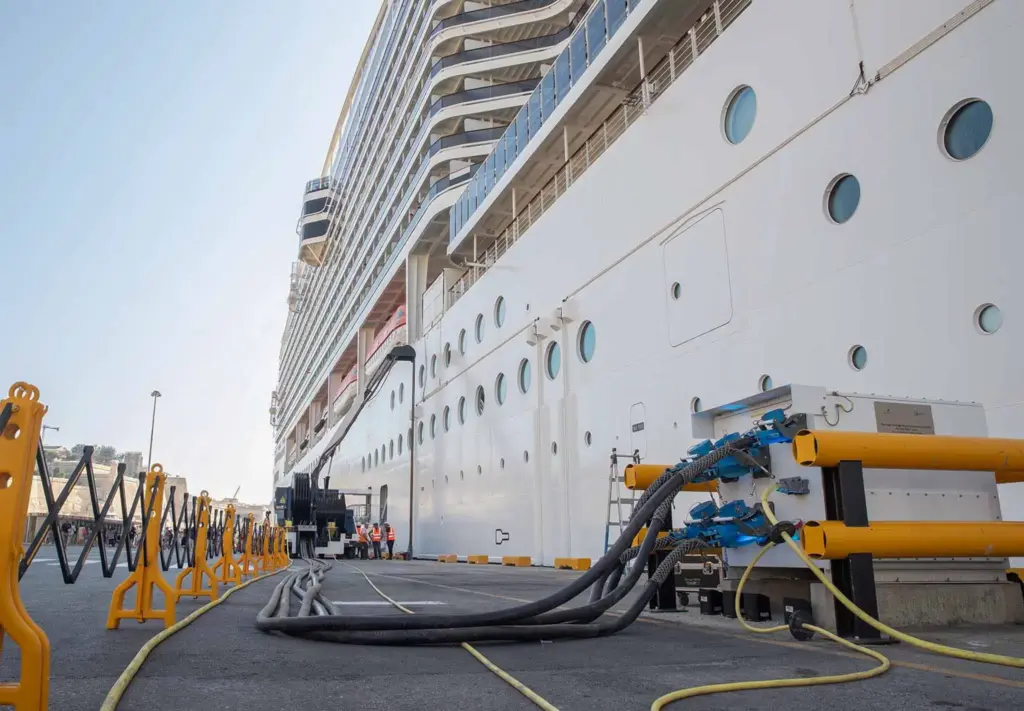
The technology for cruise liners, launched by the government in 2024 and co-funded by the European Union, allows vessels to plug into the national power grid, instead of generating power from their own engines, slashing harmful pollutant emissions.
It was launched nine months prior to the EU setting a 2030 deadline for maritime ports to install onshore power supply infrastructure and for vessels to plug in.
Shore-to-ship promises to slash 90% of air pollution from berthed cruise ships in the Grand Harbour for roughly 17,000 people who live in the surrounding areas.
Research by the organisation Transport & Environment shows that the shipping sector is one of the leading sources of greenhouse gas emissions, air and water pollution.
It is estimated to be responsible for more than 250,000 premature deaths per year worldwide, from cancer and cardiovascular diseases alone. And while all ship types have an environmental and climate impact, air pollution from cruise ships is particularly worrying, Transport & Environment highlights.
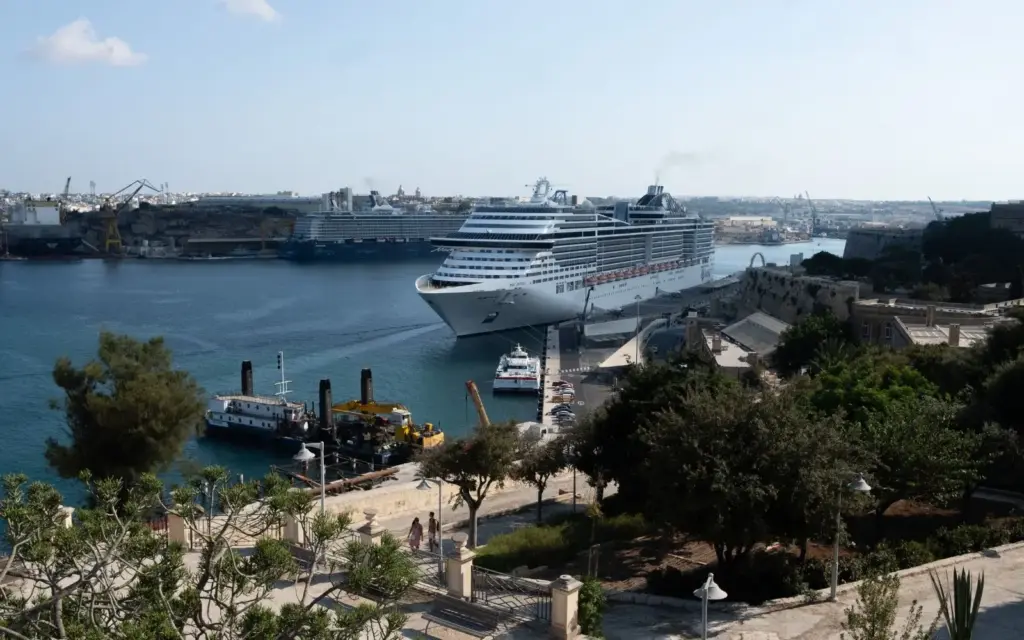
OPS Was Not Used for Longer Stays
Within the one-year period analysed by Amphora Media – between July 10th 2024 and July 10th 2025 – there were 373 cruise ship berths in the Grand Harbour. Out of these, the vessels plugged into the shore-to-ship technology 67 times, and not always for the complete duration of the stay.
Out of the total number of vessels at the port (without calculating power supply usage):
- 312 were berthed for one day or less
- 38 were berthed between one and two days
- 23 were berthed for between two to four days
Our analysis shows that cruise ships were more likely to plug into the onshore power supply when berthing for one day or less (19.6% compared to 16.2% and 0%). No cruise ships that were berthed for two to four days used the technology.
Shipping giant MSC, which co-owns Palumbo Malta Shipyard LTD, located within the same waters, plugged into Malta’s system over half (35) of the total 67 instances in which the system was used, with its MSC World Europa cruise ship. However, the same cruise ship did not plug into the OPS on another 16 occasions when it was berthed.
Asked by Amphora Media why they would decide to plug-in on some occasions but not on others, the company did not reply.
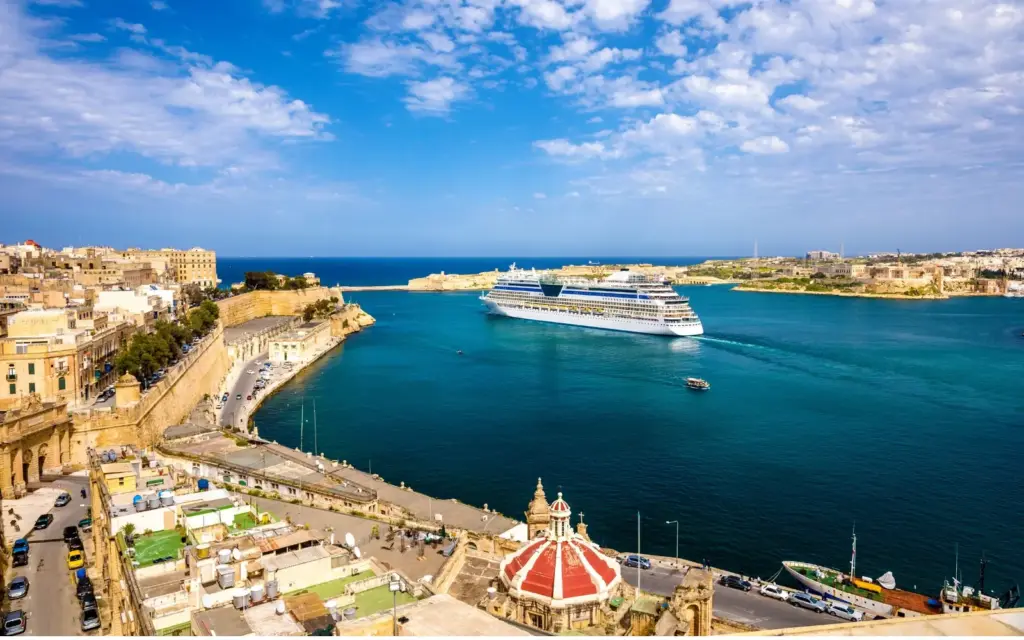
Since signing a ‘‘shore power agreement’ with the Maltese government, Carnival Corporation’s cruise liners only made use of the technology 6 out of 58 times berthing in the Grand Harbour, even in the cases where the vessel has shown the capability to plug in.
For example, the cruise vessel Costa Fascinosa plugged into the OPS technology on 13th June 2025, however, it did not make use of the technology during its following three berths in the port between June and July. Similarly, Aida Diva plugged into the system on 1st April 2025 but not on 8th April 2025.
In a request for comment, Transport Malta explained that Carnival Corporation connected to the OPS infrastructure for “testing and commissioning purposes to obtain the necessary certification” as “Onshore Power Supply ready”, adding that “once this process is completed, the vessels will be able to use the system routinely.” Carnival Corporation echoed the same justification.
Transport Malta turned down Amphora Media’s request for a copy of the shore power agreement, citing “strict” confidentiality due to its “commercial nature”.
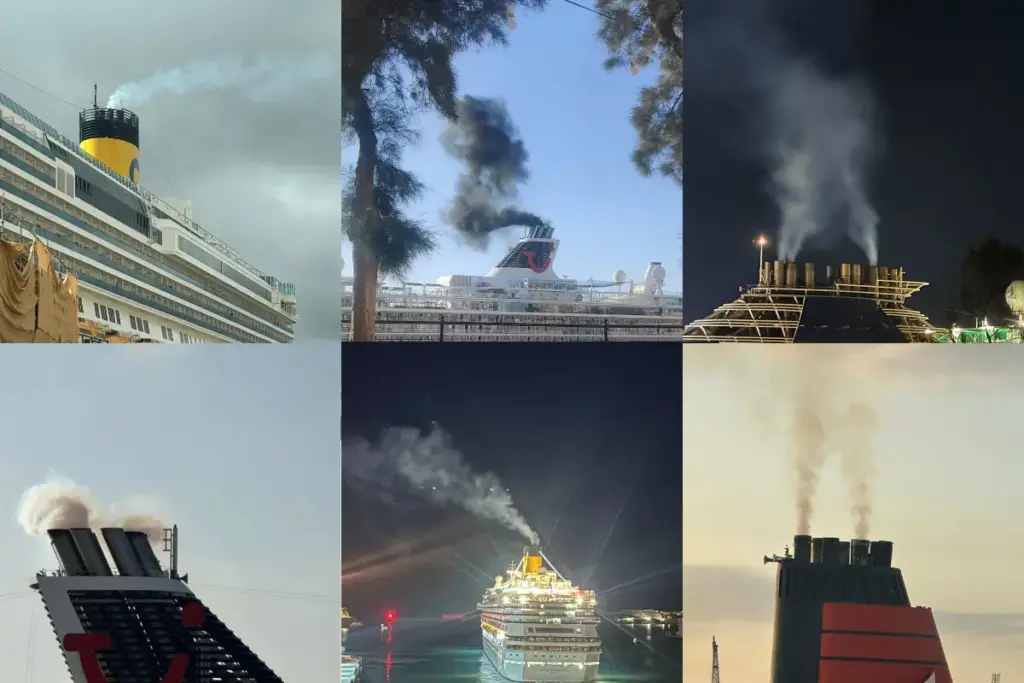
Number of Cruise Ships and Passengers in Grand Harbour on the Rise Again
Following a near-standstill of cruise ship activity during the COVID-19 year 2020, the number of cruise ships berthing in the Grand Harbour have been increasing annually, with the number of passengers hitting record figures in 2024 and registering quasi-pre-pandemic levels in terms of cruise vessel calls.
Valletta Cruise Port figures show 357 cruise liner calls in 2024. That’s up from 312 calls in 2023 and 283 in 2022, and slightly lower than the 372 calls logged in 2019.
Meanwhile, passenger numbers also hit new all-time highs: 940,915 in 2024, compared with 889,336 in 2023 and just 147,132 in 2021, and more than the 902,425 recorded in 2019.
This means that for overall air pollution in the area to decline, the emissions avoided through OPS must outweigh the added emissions from the rising number of berthed ships
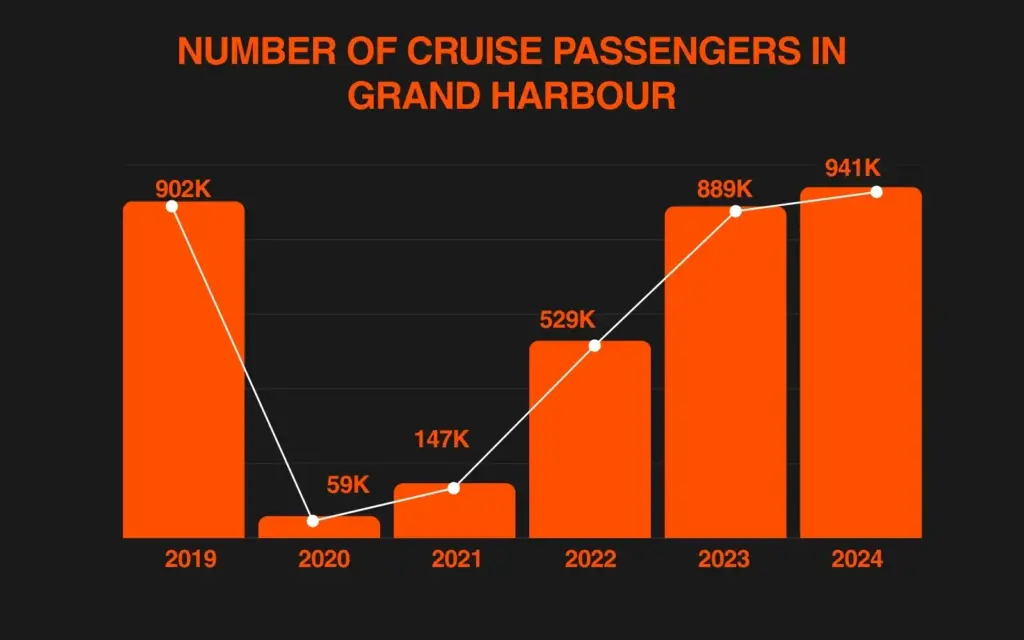
The government celebrates this constant growth in cruise arrivals. However, residents in the area who are concerned about the impact fumes spewing out of the ships are having on their health do not share the same jovial tone.
For Alex, a resident who has been living in Floriana for over a decade, the growing presence of cruise ships has led to increased noise pollution and a growing concern about the impact this surge in numbers is having on his own health and that of the rest of the community.
“Now they [cruise ships] come in at 5:30am in the morning,” he told Amphora Media. “Sometimes the whole building shakes … just to give you an idea of the impact”.
Data collected by Amphora Media indicates that 45% of port call arrivals occur at 7am or earlier, with the earliest port arrivals occurring at 4:30am.
Together with other residents, Alex started a Facebook group called ‘Clean Air for the Grand Harbour’, and since then has lent an ear to residents, who have noticed a decline in their respiratory health, among other concerns.
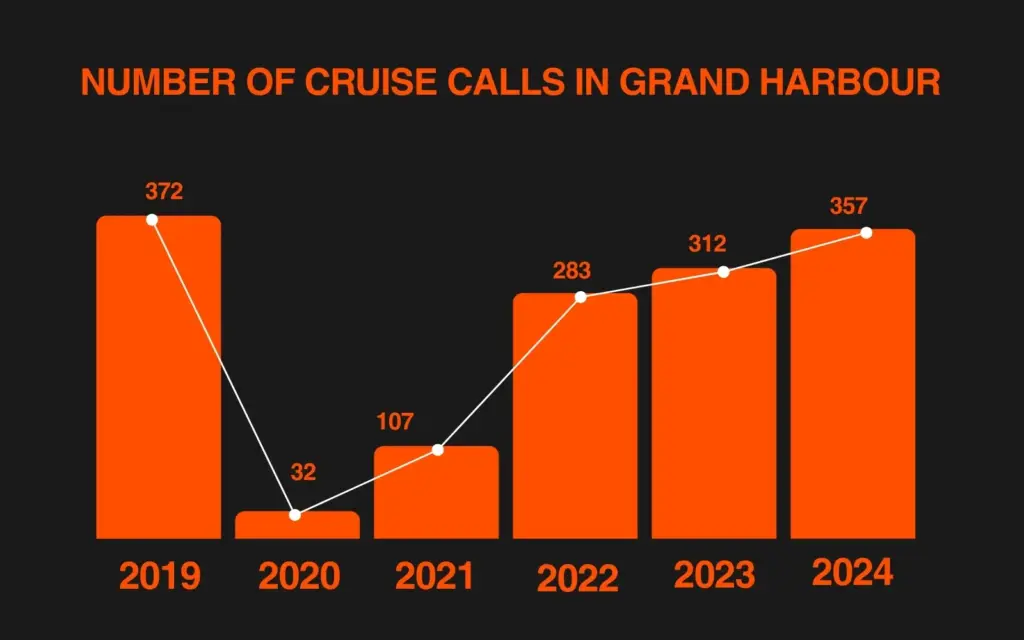
Figures can back up the reality of respiratory issues for residents surrounding the Grand Harbour.
Data on asthma as a primary or secondary discharge diagnosis from Mater Dei Hospital between 2017 and 2022, made available to Amphora Media, shows that on average, the Southern Harbour region – which includes Floriana, Valletta, The Three Cities, and other towns surrounding the Grand Harbour – was the district with the highest discharge rates.
The region experienced 1.18 diagnoses per 1000 people over the six years, followed by an average of 0.95 in the Northern district and 0.91 in the Northern Harbour district.
Infrastructure Malta, the agency overseeing the shift to OPS technology, had in fact stated in 2023 that “17,000 families residing around the Grand Harbour area” would benefit from cleaner air through the investment.
The Environment Ministry did not reply to questions by Amphora Media on the matter.

The reasons not to use the OPS system today may vary.
Francisco Ferreira, President of the Portuguese NGO Zero, which closely monitors the development of OPS systems in Portugal, explained that vessels are not yet equipped with the technology or choose not to connect, as plugging in is often more expensive than running on their own fuel.
Transport Malta reiterated that before the 2030 obligation designated by the new EU law, “subject to the condition that vessels comply with emission requirements, connecting to the onshore power, at this stage, remains the prerogative of the shipping line.” According to Ferreira, one of the biggest challenges for cruise lines is retrofitting their fleets.
“In many cases, if you have an old ship, it’s better to scrap it than retrofit it. It’s better to buy or build a new one. (…) The problem we see in this industry is the very slow pace of transformation from the current fleet to one capable of connecting to onshore power supply.”
He also stressed the importance of competitive pricing for OPS. “If the cost difference is too high, retrofitting becomes more attractive to operators than continuing to rely on diesel while at berth,” he said.
The Transport Ministry did not reply to Amphora Media’s questions on the prices Malta has currently for the use of the OPS infrastructure.
Senglea Air Monitoring Station Removed, and Particulate Matter Monitoring Removed With It
As cruise ships in the Grand Harbour increase, and OPS technology use remains low, the Environment and Resources Authority (ERA)’s mobile air monitoring station in Senglea has been removed, along with its near-real-time monitoring data, which was available for the public to view online.
Questioned about the absence of the monitor, a spokesperson for ERA confirmed the removal to Amphora Media.
“The mobile station was intended to be located there for a specific period to collect enough samples to be able to perform a study on any impact shipping in the Grand Harbour may have on air quality,” the spokesperson said. “This monitoring exercise was completed and removed from Senglea at the end of October 2024.”
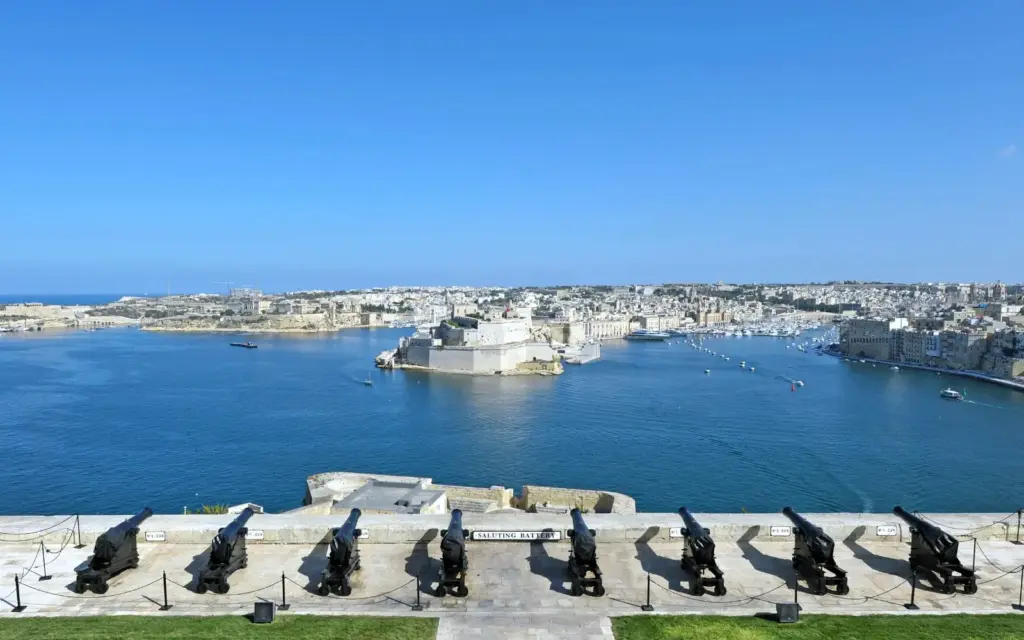
The air quality in the area is now only monitored through the passive diffusive tube network, meaning that as of October last year, residents surrounding the Grand Harbour do not have access to monitor air pollution in the area in real-time.
The passive diffusion tube network monitors the Nitrogen Dioxide (NO2) and Benzene levels around the island. The mobile monitoring stations, meanwhile, additionally calculate Particulate Matter (PM) levels and Ozone (O3) levels, among others.
In a conversation with Amphora Media, BirdLife Malta’s Head of Conservation, Nicholas Barbara, explained that monitoring particulate matter is “crucial” for monitoring the impact of the air pollution on the health of people in the area, and there is no other way to monitor PM levels other than through live monitoring.
BirdLife Malta has been one of the local NGOs at the forefront of advocating for clean air in the area.
“If they are going back to the diffuser only, they are not measuring the particulate matter at all.” he said.
Barbara argued that the government should now be thinking of a more permanent setup to continue the monitoring efforts that were covered by the Senglea monitor, since “the cruise ship industry is not going to go [anywhere], for sure, in the coming years”.
By the time of publication, ERA did not reply to questions on the absence of monitoring particulate matter in the area and the Environment Ministry did not reply to questions about the decrease in monitoring in the area.
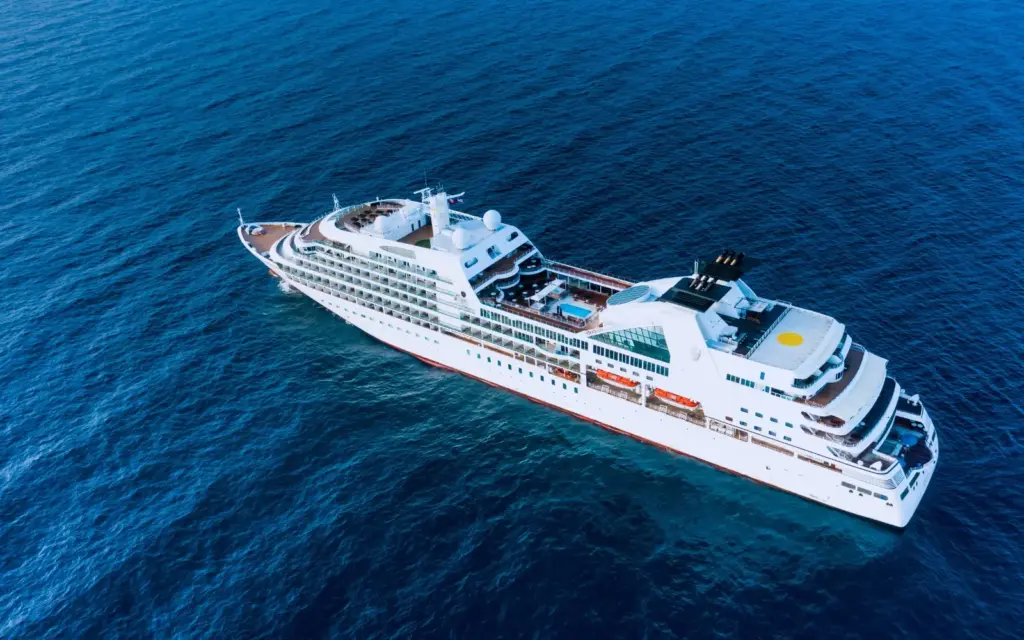
Potential Strain on National Grid Could Be Legitimate Reason Not to Connect to OPS Under New EU Law
Concerns about the stability of Malta’s national grid in relation to OPS technology have been raised since the introduction of the new system.
Last year, it made headlines after Prime Minister Robert Abela pointed to it as one of the reasons why the power grid was under pressure.
In July, the Nationalist Party also questioned the stability and reliability of the shore-to-ship power supply after alleging that cruise liners suffered power outages while connected to the national grid – allegations that Transport Malta and Enemalta denied.
Under the new EU law, vessels will be allowed not to plug in to OPS systems in cases where they are “unable to connect to OPS because, exceptionally, the electrical grid stability is at risk, due to insufficient available shore-power to satisfy the ship’s required electrical power demand at berth.”
This investigation is part of Senza Segnale, a collaborative project that reconnects news deserts in the Mediterranean.
Senza Segnale is a project by Amphora Media and IrpiMedia; in collaboration with Fada, Facta, Indip, Infonodes, Centro di Giornalismo Permanente; in cooperation with the Allianz Foundation.
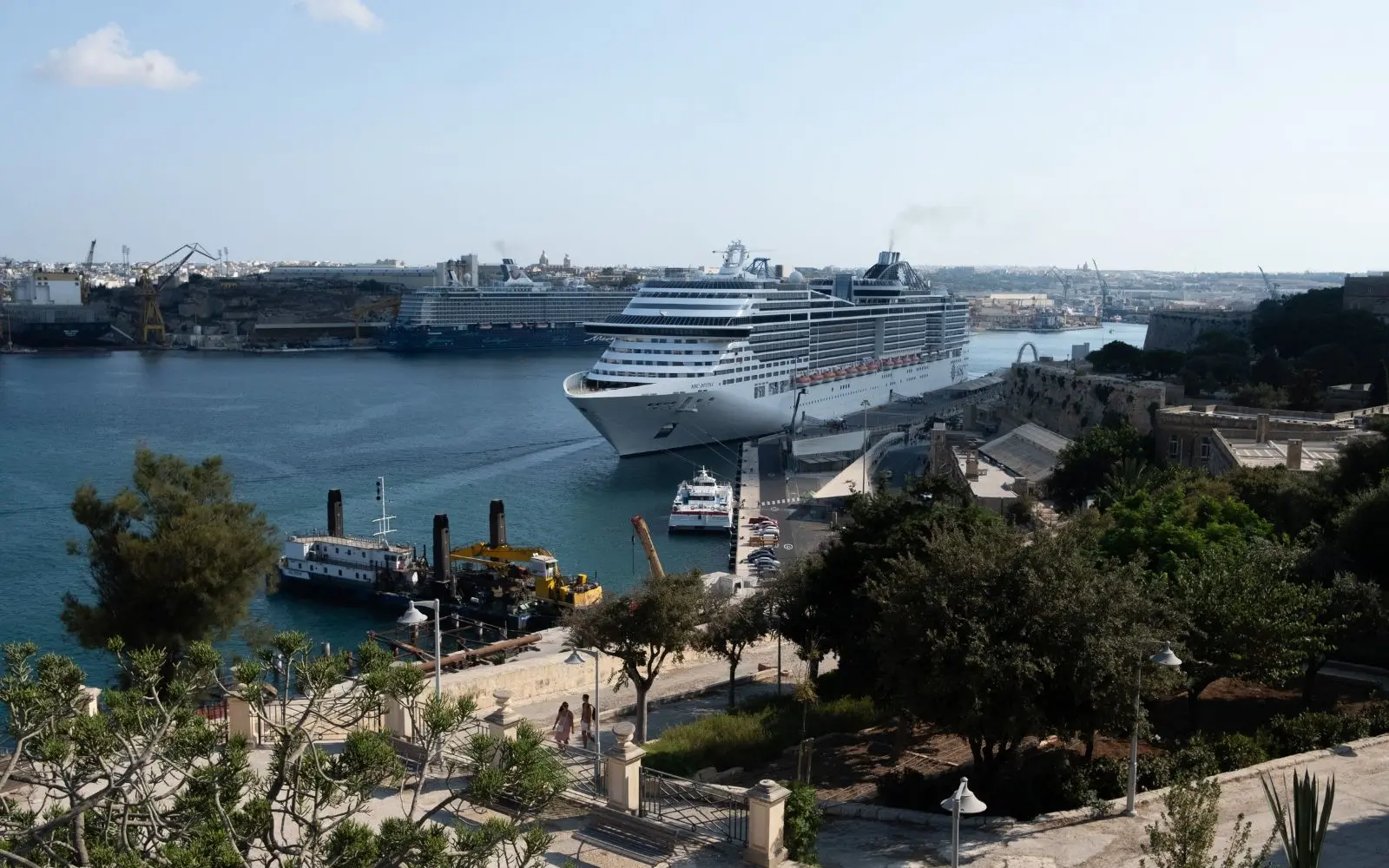
Leave a Reply